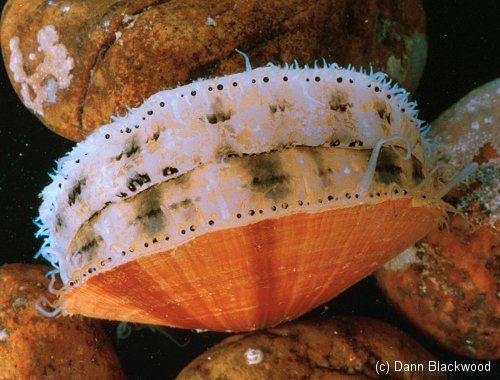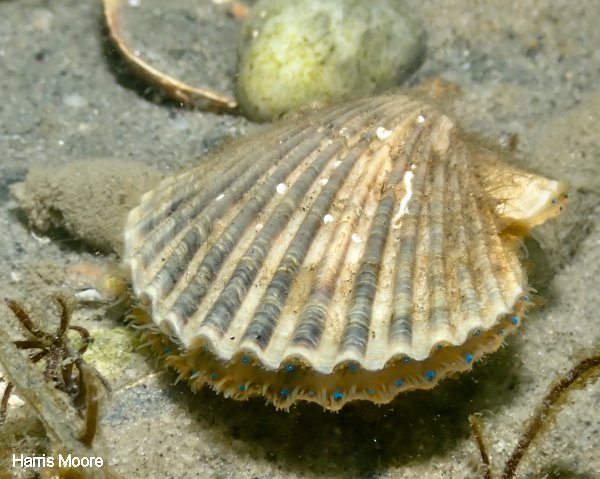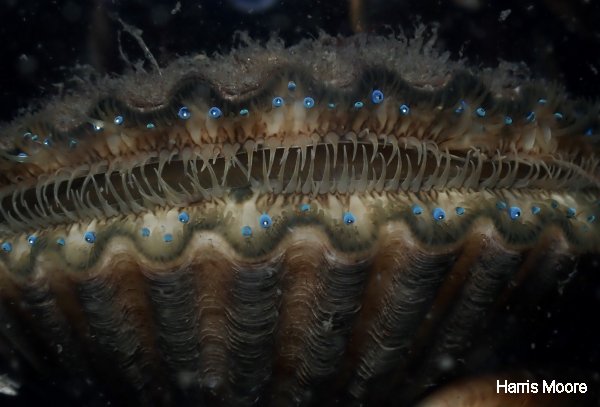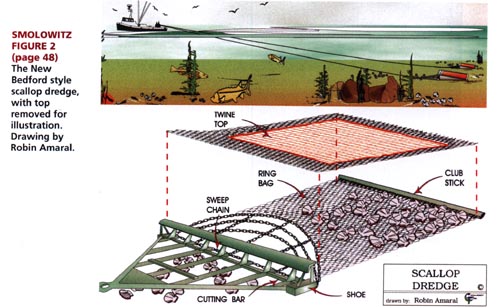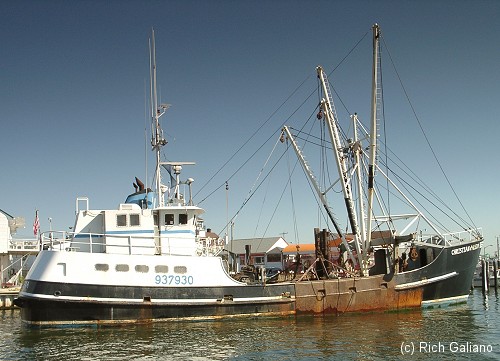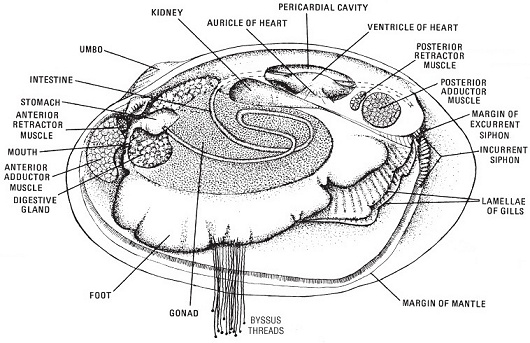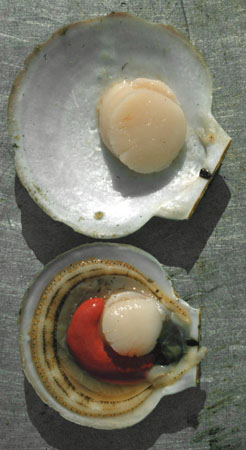Scallops
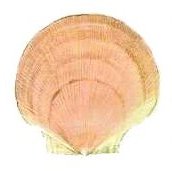
Scallops can swim in spurts by clapping their shells. Water is ejected backward through openings on either side of the hinge, propelling the scallop in the opposite direction - surprising to see for the first time. When not jetting around, they settle into evenly-spaced shallow pits in the sand.
The Deep Sea Scallop Placopecten magellanicus (right) grows to 8" and is found offshore, generally in water over 100' deep. The smaller but equally edible Bay Scallop Aquipecten irradians, to 3", is found in bays and protected shallow waters. The Bay Scallop has a deeply ribbed shell, while the Deep Sea Scallop has many tiny ribs.

Scallops have many eyes around the edge of the shell and can see well enough to tell when a diver is coming after them. And they have reason to be worried as well - they taste great raw right out of the shell, and make a great snack on the boat between dives! The edible part is a plug of muscle that opens and closes the shell.
